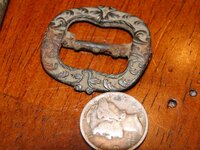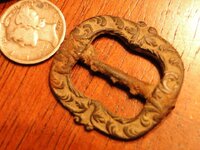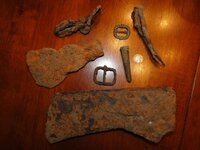Any body have any insight into this stuff. May have a colonial site.
The buckle I found today 3.5 inches deep. Regiters 51 on my White's machine.
Could it be silver it's heavy and has a weathered black hugh. Scroll looks like engraving on silverware?
Near Francis Marion and Nathanial Green camp
The buckle I found today 3.5 inches deep. Regiters 51 on my White's machine.
Could it be silver it's heavy and has a weathered black hugh. Scroll looks like engraving on silverware?
Near Francis Marion and Nathanial Green camp





